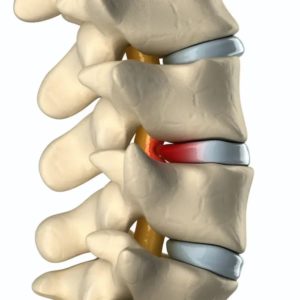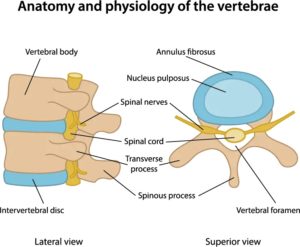What is Degenerative Disc Disease?
People’s spine wear down with age. Your spinal discs help you move and bend, being little shock absorbers throughout your spine. Degenerative disc disease is osteoarthritis of the spine, and typically occurs in the neck or lower back. The discs that cushion your vertebrae can suffer fragmentation, herniation or loss of that cushioning over time.
What Causes Degenerative Disc Disease?
 Degeneration happens to your spinal discs with age, and begin occurring after the age of 50+. This is the most common cause, and naturally happens to people. Your disc is about 80% water, and over time it dries out, which reduces the effectiveness of the cushioning of your spinal disc.
Degeneration happens to your spinal discs with age, and begin occurring after the age of 50+. This is the most common cause, and naturally happens to people. Your disc is about 80% water, and over time it dries out, which reduces the effectiveness of the cushioning of your spinal disc.
There are also activities that accelerate degenerative disc disease such as physical activities that put pressure on the neck or back, or would compress the discs in your spine. An injury from a fall, or straining the neck or spine can also increase the rate of degeneration in your disc. Smoking and being overweight also tend to contribute to more rapid degeneration.
Disc Desiccation
The dehydration of your spinal disc is called disc desiccation. Spine health is an important part of your overall health profile, but degeneration will happen to even the most healthy individuals. The dehydration of spinal discs occurs very slowly over time. When the spinal discs loses fluid, it’s replaced with fibrocartilage that limits the range of motion of the disc.
Degenerative Arthritis
Arthritis can be categorized as inflammatory or non-inflammatory. Degenerative arthritis is non-inflammatory and is called osteoarthritis. Osteoarthritis is the most common form of spinal arthritis, and the degeneration of the spinal disc can contribute to arthritic pains.
 Bulging Disc in the Neck
Bulging Disc in the Neck
Degenerative disc disease is the most common cause of bulging discs in the neck, since the outer layer gets worn down causing them to bulge. When the disc bulges outwards, usually to one side, it puts pressure on your nerves. Since many times it only effects one side, you will only experience pain on whichever side has nerve pressure. An MRI can be used to discover if you have a bulging disc, or a herniated disc in your neck.
Disc Space Narrowing
The spinal canal is a hollow passage formed by the foramen and vertebrae, and the spinal cord runs through this canal. It originates at the base of the skull and ends at the sacrum near your legs. Places of the canal can narrow due to disc degeneration, which is called spinal stenosis. The narrow canal puts pressure on the nerves in your spine and cause you pain, usually in the lower back or neck.
Degenerative Disc Disease Symptoms
If you have degenerative disc disease the symptoms are usually tingling, numbness, and muscle weakness. If you have a cervical spine (neck) issue it can effect a hand, arm, foot, or leg, and give you difficulty with balance and neck pain.
When the effected area is the lumbar spine (lower back) the numbness / weakness can happen in a foot or leg, and cause pain or cramping in one or both legs, and also back pain.
What is the best treatment for degenerative disc disease?

The non-surgical degenerative disc disease treatment options include pain management, which involve anti-inflammatory medications, steroid injections, electrical stimulation, braces and heat/ice therapy.
Physical therapy can help to stretch and strengthen your muscles to assist the back in healing and reduce inflammation flare ups.
Changing your posture, losing weight, and quitting smoking can also help slow degeneration, and reduce stress on your damaged discs.
If none of the non-surgical treatments for your degeneration work, there are a few surgical options available to you. There are operations to replace the damaged disc, removing parts of the disc and spinal fusion to reduce movement in the damaged vertebrae.
Replacing a damaged disc is called Artificial Disc Replacement wherein the disc causing problems is replaced with an artificial one made from polyethylene with metal endplates.
Removing parts of the disc is called a discectomy and can include spinal fusion, which is using a bone graft, metal plates and screws to physically fuse two vertebrae of your spine together. Without the fusion the discectomy procedure will just cut away the portion of the disc causing pain.
There is also a spinal laser surgery that treats herniated or bulging discs without incisions or removing of any bone. All it takes is a thin needle inserted through the back or neck and directly into the spinal disc, which then uses heat from the laser to evaporate a piece of the disc nucleus, which decompresses the bulge or herniation. This removes pressure from your nerve, and relieves pain from your back or neck.
Talk to a medical doctor to find out what kind of treatment plan is best for you if you have degenerative disc disease.


